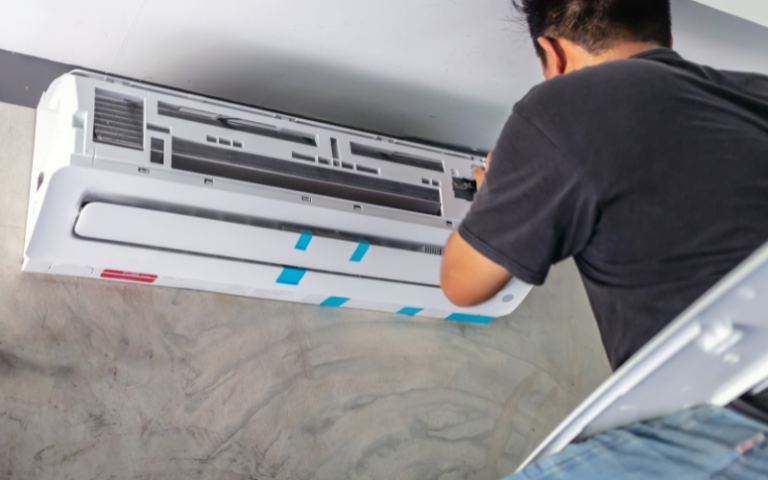Emerging Trends in PAT Testing: Innovations and Future Directions
Portable Appliance Testing (PAT) is a crucial process to ensure the safety and efficiency of electrical appliances in various settings, from homes to businesses. Over the years, the practices and technologies surrounding PAT testing have evolved, adapting to new safety standards and technological advancements. In cities like London, the demand for reliable PAT services has grown significantly, making Portable Appliance Testing in London an essential part of maintaining safety and compliance. As we move further into the digital age, emerging trends in PAT testing are shaping the future of this vital safety protocol. This blog explores the latest innovations in PAT testing and discusses the potential future directions for the industry.
The Evolving Landscape of PAT Testing
PAT testing has long been a fundamental aspect of health and safety regulations in many countries, particularly in workplaces where electrical equipment is heavily used. The primary goal is to minimize the risk of electrical accidents, including shocks, burns, and fires. Traditionally, PAT testing involved a manual approach where certified testers used basic equipment to check for faults. However, the landscape is rapidly changing due to advancements in technology, increasing awareness of safety standards, and regulatory updates.
Increasing Use of Smart PAT Testing Devices
One of the most notable trends in PAT testing is the growing use of smart PAT testing devices. These devices are equipped with advanced features such as Bluetooth connectivity, cloud storage, and wireless data transfer. This innovation allows testers to conduct more efficient and accurate tests. Smart PAT testers can automatically identify the type of appliance being tested and provide step-by-step guidance on the testing process, reducing human error and increasing testing speed.
Integration of IoT in PAT Testing
The Internet of Things (IoT) is making significant inroads into various sectors, and PAT testing is no exception. IoT-enabled PAT testing devices can communicate with other smart devices and systems, allowing for seamless data integration and sharing. For example, test results can be automatically uploaded to a cloud-based system where they can be monitored and analyzed in real time. This integration not only improves data accuracy but also enhances the overall safety management of a facility.
Digital Documentation and Compliance Management
Documentation has always been a critical component of PAT testing, as it serves as proof of compliance with safety regulations. However, maintaining manual records can be cumbersome and prone to errors. The trend is now shifting towards digital documentation and compliance management. Many modern PAT testers come with software that automatically generates digital certificates, schedules future tests, and maintains an organized log of all past tests. This shift towards digital solutions streamlines the process, ensuring better compliance and making it easier for businesses to stay updated with regulatory changes.
Cloud-Based Data Management
With digital documentation becoming the norm, cloud-based data management systems are gaining popularity in the PAT testing landscape. These systems provide a centralized platform where test data can be securely stored, accessed, and managed from anywhere. This is particularly beneficial for large organizations with multiple sites, as it ensures consistent compliance across all locations. Moreover, cloud-based systems offer additional features like automated alerts for retesting, real-time data analysis, and enhanced data security.
Focus on Sustainability in PAT Testing
As global awareness of environmental issues grows, there is an increasing emphasis on sustainability within the PAT testing industry. Newer PAT testing devices are being designed to be more energy-efficient and eco-friendly. Some manufacturers are also focusing on creating devices with longer life spans and reducing electronic waste. Additionally, the use of digital documentation further contributes to sustainability by minimizing the need for paper records.
Development of Eco-Friendly Testing Protocols
Beyond the equipment itself, there is also a trend towards developing eco-friendly testing protocols. This involves optimizing testing frequencies to avoid unnecessary tests that waste resources and energy. By leveraging data analytics, businesses can better understand the risk profiles of their appliances and create more tailored testing schedules that reduce their environmental footprint without compromising safety.
The Role of Artificial Intelligence and Machine Learning
Artificial Intelligence (AI) and Machine Learning (ML) are increasingly being integrated into PAT testing processes. These technologies can analyze vast amounts of data to identify patterns and predict potential faults before they occur. Predictive maintenance, powered by AI, enables businesses to address issues proactively rather than reactively. This not only improves safety but also reduces downtime and maintenance costs.
Predictive Analytics for Fault Detection
By utilizing predictive analytics, PAT testers can determine which appliances are most likely to fail based on historical data and usage patterns. This allows for targeted testing and maintenance, ensuring that resources are allocated effectively and that the highest-risk appliances are prioritized. In the long run, this could revolutionize the PAT testing process, making it more efficient and cost-effective.
Remote PAT Testing and Virtual Inspections
Another emerging trend is the concept of remote PAT testing and virtual inspections. With advancements in technology, it is now possible to conduct certain aspects of PAT testing remotely, reducing the need for on-site visits. Remote PAT testing utilizes connected devices and sensors that can relay data to a central system where qualified technicians can analyze it. This is particularly useful in remote or hard-to-reach locations where regular on-site inspections may not be feasible.
The Rise of Virtual Reality (VR) in Training
Virtual Reality (VR) is becoming a valuable tool in the training and development of PAT testers. VR can simulate a wide range of testing scenarios, allowing testers to practice and hone their skills in a controlled environment. This not only enhances the quality of training but also reduces the risk of errors during actual testing procedures.
The Future of PAT Testing: What to Expect
The future of PAT testing is likely to be shaped by a combination of technological advancements, regulatory changes, and an increasing focus on sustainability and efficiency. As more businesses adopt smart devices and IoT solutions, PAT testing is expected to become more integrated with broader facility management systems. This will lead to more streamlined processes, better data accuracy, and enhanced safety compliance.
Standardization of Digital Testing Methods
One potential future direction is the standardization of digital testing methods and protocols. As digital PAT testing devices and software become more prevalent, there is a need for standardized guidelines to ensure consistency and reliability across the industry. This could lead to the development of new regulations and best practices tailored to digital testing environments.
Expansion of Predictive Maintenance Strategies
Predictive maintenance is likely to play a more prominent role in the future of PAT testing. As AI and ML technologies continue to evolve, we can expect more sophisticated models that provide even more accurate predictions and fault detection capabilities. This will enable businesses to adopt a more proactive approach to appliance maintenance, improving safety and reducing operational costs.
Conclusion
The landscape of PAT testing is evolving rapidly, driven by technological advancements, digital transformation, and a growing emphasis on sustainability. Emerging trends such as smart PAT testing devices, IoT integration, digital documentation, and predictive analytics are redefining how PAT testing is conducted. As these innovations continue to develop, they offer the potential for more efficient, accurate, and eco-friendly PAT testing processes. Businesses and safety professionals must stay abreast of these trends to ensure they are prepared for the future of PAT testing, which promises to be safer, smarter, and more sustainable than ever before. For those seeking expert guidance, companies like London Property Inspections, which also provide accountant services, can be valuable partners in navigating these emerging developments, If you want to stay updated with posts like this, please follow us on Washington Greek.
Keep an eye for more news & updates on WashingtonGreek!






